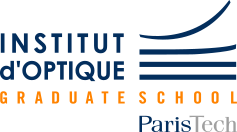EF1Optics without calculation
Niveau : Débutant
Publics :
Anyone wishing to use optical instruments or become familiar with optics
Prérequis :
None
Langue de la formation : Français
Capacité maximum : 12
Prix : 1380 € HT -
Durée : 3 days - 21 h
Objectifs
- Acquire quickly and simply the basics of optics
- Communicate effectively in the field of optics
- Understand a specification
- Make the best use of common optical instruments
- Design and set up a simple assembly

Thèmes abordés
Nature of light (wave / particle), light sources and optical spectrum
- Light propagation (free space, guided optics, optical fiber...)
Image formation by lenses and mirrors
Phenomena of interference, diffraction and polarization
Operation and use of optical instruments
- The eye and its defects
- Simple instruments (telescope, viewfinder, collimator...)
Le programme
Nature of light, reflection phenomena and refraction
- Waves and particles (light rays)
- Diversity of light sources, UV spectrum, visible, IR, white light, laser
- Free and guided propagation (fiber optics)
- Plan mirror: paths of incident and reflected rays
- Refractive index of a transparent medium
- Path of light in a parallel-sided blade and in a prism (dispersion)
From the simple lens to the operation of an optical instrument
- Tracing of elementary rays in a lens
- Convergent, divergent lenses
- Position of an object and its image, magnification
- Eye, photo lens, magnifying glass, telescope, microscope
Wave phenomena
- Interferences: principle, summation of two vibratory waves
- Illustrations: thin blades (soap bubbles, oil films), optical treatments, filters
- Diffraction: origin of the phenomenon (wavelet sources)
- Illustrations: diffraction by a slot, grating, compact disc, hologram
Experimental demonstrations and practical work
- Light guidance
- Light rays propagation in a homogeneous, inhomogeneous medium
- The laws of reflection, refraction
- Continuous spectra, spectra of lines
- Imaging by an objective (real, virtual environments), by a spherical mirror
- Geometric and chromatic aberrations
- Near-field / far-field diffraction
- Interference (Michelson interferometer)
Méthodologie et évaluation
Courses and exercises
Interactive experimental demonstrations
Practical work on instruments
Responsable(s) pédagogique(s) :
- Gilles le Boudec - Expert consultant / Ingénieur R&D
Toutes les formations :

